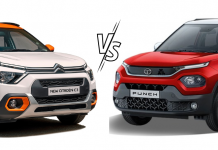Content Table
Today’s automotive sector in India is witnessing significant developments across various segments, highlighting the dynamic and evolving nature of the industry.
SUV and Electric Vehicle Market Expansion
The SUV market continues to dominate the Indian automotive landscape. In FY2024, Utility Vehicles (UVs) accounted for nearly 60% of all passenger vehicle sales, marking a 26% year-on-year growth. Brands like Maruti Suzuki, Mahindra, and Hyundai are leading this surge, driven by strong consumer demand for SUVs and MPVs. Maruti Suzuki remains the market leader in this segment, with models like the Brezza and Grand Vitara contributing significantly to its success.
Electric vehicles (EVs) are also gaining traction, with premium brands expanding their portfolios. Mercedes-Benz is set to launch the Maybach EQS 680, while BMW has introduced the i5 M60 electric car, underscoring a growing focus on luxury EVs in India. Additionally, Tata Motors is making significant strides in the EV segment, continuing to secure substantial orders that boost its market position.
New Launches and Discounts
Several new models are making headlines. Tata Motors launched the Curvv, a mid-size SUV priced competitively at ₹9.99 lakh, aiming to challenge established players in this segment. Mahindra is offering significant discounts on the Thar due to the introduction of the Thar Roxx, a new variant designed to limit the impact on the 3-door model’s sales.
On the two-wheeler front, Jawa Yezdi has launched the 350 Jawa 42 FJ, adding to its retro-themed lineup with modern features, while Royal Enfield introduced the 2024 Classic 350, continuing its legacy in the cruiser segment.
Industry-Wide Growth and Future Prospects
Overall, the Indian automotive industry is showing robust growth, with a 12% increase in total vehicle sales, reaching 23.85 million units in FY2024. This growth is led by the two-wheeler segment, which saw a 13% rise in sales, and the three-wheeler segment, which surged by 42% thanks to increased demand for passenger-ferrying vehicles. The commercial vehicle segment also experienced marginal growth, reflecting the ongoing infrastructure development across the country.
These developments underscore the Indian automotive industry’s resilience and its capacity to adapt to changing market dynamics, driven by both consumer demand and technological advancements.




























